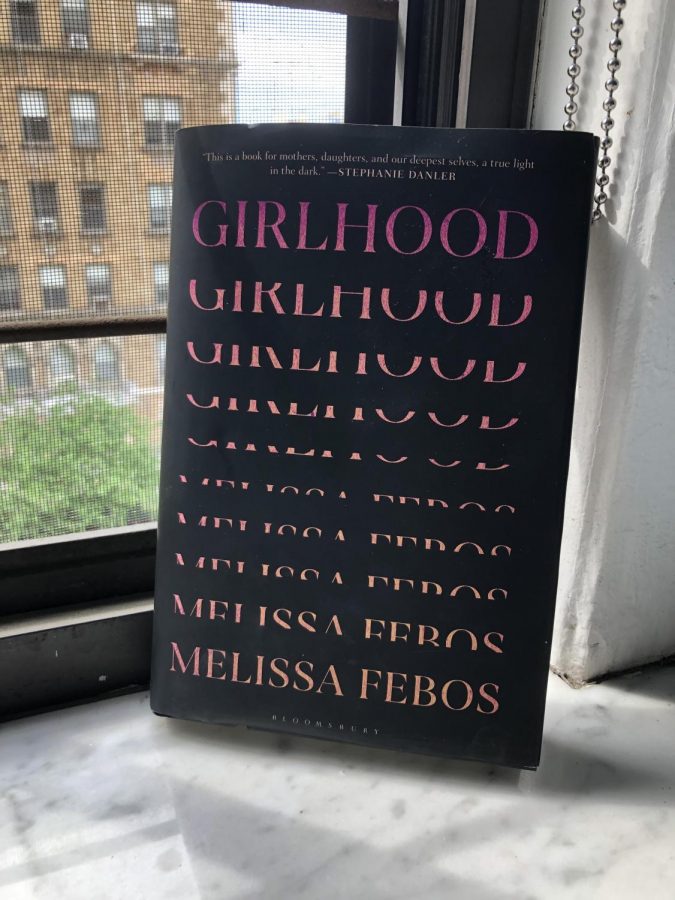This Tale of Girlhood is Not for the Light-Hearted
Melissa Febos’ new collection of essays tackle how our society conditions and shapes young women, even if it is in the most subtle of ways.
The deep black cover of Girlhood foreshadows the intensity of the essays contained inside.
Girlhood is not a pleasurable book to read. To call it such would be an insult to what Melissa Febos is trying to tell us through her collection of feminist, autobiographical essays; that is, as her author’s note says, “[Girlhood] is a darker time for many than we are often willing to acknowledge.”
Febos starts her narrative at 11 years old, a time when her body and, as a result, value to the world began to change. From there, she takes the reader through a series of stories centered around unwanted sexual attention and unresolved trauma that continues into her mid-30s. Weaving together her own experiences with cultural references, scholarly research, and anecdotes from other women, she forms an account that is frightening, raw, and, ultimately, heartbreaking.
In the essay Wild America, Febos recalls her teenage self’s fear of being seen as passionate or animalistic in any way, internalizing society’s expectation of women to not take up space in both the literal and figurative sense. Speaking of one day where the only thing she ate was toxin-reminiscent Jell-O powder, Febos writes, “I would have poisoned myself if I thought it would transform me into a smaller animal.” It is an all-too-familiar anecdote for women struggling with their body image, but the detail and bitterness with which Febos describes it still provokes a fresh wave of shock.
Part of why Girlhood is so effective at producing this reaction is because Febos refuses to shy away from the personal and uncomfortable. She, for lack of a better phrase, calls it for what it is; it being society’s treatment of women and young girls. Febos does not spare the reader the details of her voyeur’s comments, nor does she soften her criticism of society to render her writing digestible. For instance, after describing her inclination to blame herself for the presence of her voyeur, she writes, “It is through the collaboration of all these factors, of course, that patriarchy is enforced: an elegant machinery whose pistons fire silently inside our own minds, and whose gleaming gears we mistake for our own jewelry.” It is a statement that is searing, brutal, and undeniable.
Even without these grand proclamations scattered throughout the book, Girlhood would remain a feminist masterpiece. Its power comes from the ability of the reader to draw connections between Febos’ experiences and their own and notice how chillingly similar they can be. Through the story of one, Febos can uncover the stories of many; it is only after she realizes that her everyday encounters with men were not truly consensual that she could interview other women and uncover the commonality of this occurrence. The reader is not supposed to identify with every aspect of Febos’ experience, but the few moments within the book that can make them think, I may as well have written this, speak volumes about our society at large.
This focus on personal narrative also helps Febos avoid the trap of exclusion that so many early feminist works fall into. She never discusses the experience of women as a whole, only making generalizations when she can tie together the story of several interviewees with her own. With works such as Betty Friedan’s The Feminine Mystique and Simone de Beauvoir’s The Second Sex, the messages of a common female experience often fail to apply to those who lie beyond the realm of Caucasian, heterosexual life.
Take, for example, the chapter of Beauvoir’s manifesto that attempts to deal with the origins of female queerness. After twenty pages of fumbled assertions that continually confuse transgender and queer identity, Beauvoir then writes, “It must be added that many women only declare themselves homosexual out of self-interest: they adopt equivocal appearances with exaggerated consciousness, hoping to catch men who like ‘perverts.’’’ As horrifyingly amusing as this proclamation is, it serves as a reminder that literature that attempts to speak for all women often ends up denying those who the author can not readily identify with a true voice. Febos does not avoid these pitfalls just because she happens to be queer herself, but because she understands the nuance and complexity of these “female” experiences that we must work so hard to dismantle.
Part of why Girlhood is so effective at producing this reaction is because Febos refuses to shy away from the personal and uncomfortable.
Maggie Schneider is an Editor-in-Chief of ‘The Science Survey.’ She loves journalistic writing because it is a recognition of the infinite number of...

